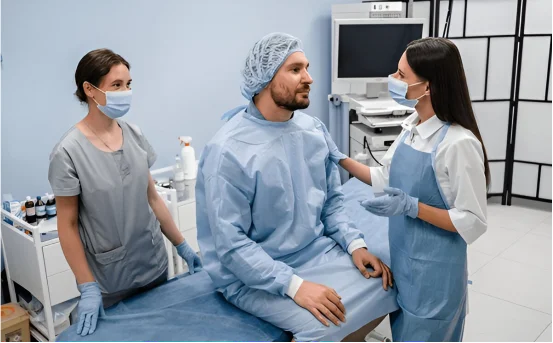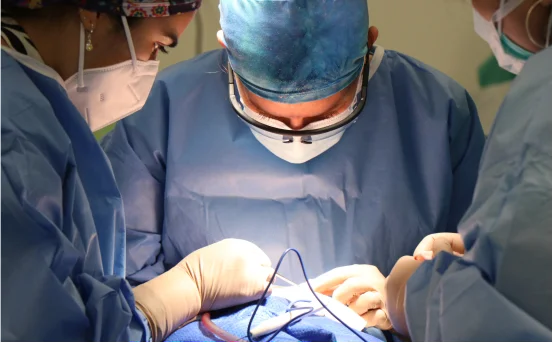Bronchoscopy is a quick, low-impact procedure that gives doctors a direct view of the airways and lungs through a slender, flexible tube called a bronchoscope. Though it is commonly viewed as a mere diagnostic tool, people often label it “bronchoscopy surgery” when the procedure involves taking biopsies, pulling out foreign objects, or carrying out therapeutic tasks.
So why might someone be sent for this procedure? Knowing the main reasons behind bronchoscopy helps underline its role in spotting serious lung problems before they become harder to manage.
Quick Look at the Procedure
Understanding the Causes for Bronchoscopy Surgery
Before detailing those reasons, it helps to picture what happens during the exam. The bronchoscope is slid in gently through either the nose or mouth, moving down the throat into the airway system. A tiny camera at the tip feeds live footage to the doctor, who may use small tools attached to the scope to grab tissue samples, remove blockages, or carry out other localized treatments.
What is Bronchoscopy Surgery
Bronchoscopy isn’t a single procedure; it actually comes in two main versions. The flexible bronchoscope has become the go-to choice for most doctors. Its thin, bendy tube makes it easy to sneak a look inside the airways, take samples, and guide small tools when needed. Because it causes less discomfort and requires only light sedation, patients usually prefer it for diagnostic work. The more rigid bronchoscope is bulkier and can feel clumsier, but it still plays an important role, particularly when a larger opening is required for treatment or surgical tasks.
Doctors will recommend a bronchoscopy when symptoms simply refuse to settle down. One classic red flag is a cough that drags on for eight weeks or longer. If antibiotics, inhalers, and lifestyle tweaks don’t show any improvement, the airways are worth a closer look. Persistent coughing can stem from chronic bronchitis, untreated asthma, or, in rarer cases, early lung cancer, all of which leave standard scans and tests frustratingly incomplete. Another urgent cause is hemoptysis—coughing up blood, even a few specks. While it can result from minor irritations, it often signals something more serious, such as tuberculosis, a lung tumor, bronchiectasis, or a pulmonary embolism. Here the bronchoscope becomes a detective, quickly locating the source of the bleeding so treatment can begin.
Unusual Findings on Chest Imaging
It’s not uncommon for a routine chest X-ray or CT scan to reveal an unexpected shadow or tiny nodule. Whenever that happens, doctors frequently suggest a bronchoscopy. This procedure allows them to get a closer look inside the airways and do several important things: grab a tiny tissue sample for a biopsy; figure out if the spot is harmless or cancerous; and keep an eye on how fast a tumor or infection might be growing.
- Suspected Lung Tumors :- Lung cancer remains one of the top reasons people end up in the bronchoscopy suite. During the procedure, specialists can take tissue from lung masses, check if the cancer has spread to nearby lymph nodes, and help establish a stage that guides treatment choices. Because the test is minimally invasive and can be done early, it plays a vital role in improving survival odds for patients.
- Unresolved Infections and Lung Inflammation :- Sometimes, even after rounds of antibiotics and imaging, doctors still can’t pin down a stubborn lung infection. When standard tests hit a wall, bronchoscopy steps in. By washing the airways with sterile fluid, clinicians can isolate organisms responsible for infections such as fungal pneumonia, tuberculosis, or drug-resistant bacteria. The procedure is also helpful for diagnosing certain interstitial lung diseases, where inflammation and scarring puzzlingly blur the picture.
- Airway Obstruction from Foreign Bodies :- Children and older adults can accidentally breathe in everything from bits of food to small toys, creating an immediate risk for blockage. In these urgent situations, a bronchoscopy is performed quickly to fish out the object, clear the airway, and stop choking or a potential lung collapse before it worsens.
- Airway Blockages or Strictures :- When a tumor, a patch of scar tissue, or lingering inflammation squeezes the bronchial tubes, breathing can feel cramped. In those cases, doctors may rely on a rigid bronchoscopy to gently open the passageway. The procedure can widen the airway, place a supportive stent, or directly scoop out any troublesome blockage. Many patients find that the intervention brings almost instant relief, letting them draw in air more easily and boosting overall oxygen levels.
- Persistent Lung Infiltrates :- Sometimes, CT or X-ray scans show cloudy patches in the lungs that stubbornly linger despite a course of antibiotics. When that happens, a physician may turn to bronchoscopy as a next step. The thin, flexible tube allows them to snag tiny tissue samples, helping to rule out conditions like sarcoidosis, lymphoma, or the scarring disorder known as idiopathic pulmonary fibrosis. Getting those answers can guide treatment and ease patient anxiety.
- Monitoring and Follow-Up :-For people already living with chronic lung problems—COPD, lung cancer, or other illnesses—a one-time bronchoscopy isn’t always enough. Doctors may arrange repeat visits to watch how the airways are changing over time, check whether a therapy is working as intended, and chart the best path forward.
Why Is Bronchoscopy Important?
Bronchoscopy is far more than a fancy scope; it is a lifeline in the world of pulmonary medicine. It gives clinicians a chance to catch aggressive diseases like lung cancer or tuberculosis before they spread too far. Because the approach is mostly minimally invasive, it can often spare patients the trauma of major chest surgery. In real time, the operator can see the airway, sample tissue and fluid, and send it promptly to the lab for analysis. When sputum tests or standard imaging miss the mark, this technique fills the gap, supplying the detail that drives confident treatment choices.
Is a bronchoscopy safe to have done? Most patients find it remarkably safe. Minor annoyances can pop up—like a sore throat, a bit of coughing, perhaps some light bleeding or a low-grade fever—but you usually shake those off quickly. In very rare cases, a collapsed lung may occur, yet this happens so seldom that experienced lung specialists stick to well-tested steps to keep it unlikely.
Before the procedure, your care team will walk you through a few simple preparations. You might need to stay off blood thinners for a time, avoid food and drink for 6 to 12 hours, and have a routine blood test and chest X-ray done. On the day itself, either a light sedation with local numbing or, for rigid bronchoscopes, a full general anesthetic will help keep you comfortable while the doctor works.
Once it is done, you will not leave the clinic immediately. A nurse will watch you for an hour or two to make sure recovery is smooth. You could feel that dry scratchy throat or a short-lived cough, and that is perfectly normal. Most people ease back into their everyday chores the next morning. If biopsies were taken, the results usually come in a few days, at which point your doctor will talk through the next steps together.
Conclusion
Bronchoscopy has become a mainstay in lung care for good reason. Whether an unexplained cough, an odd scan, or concern about cancer brings you in, the scope gives doctors a direct look inside your airways. They can take samples, clear blockages, or start early treatment—all without opening you up. When time counts, and especially in cases of serious infection or malignancy, that small tube truly can make a lifesaving difference.
When breathing problems linger and over-the-counter remedies fail to bring relief, it’s easy to brush them off as a passing phase. However, whether it’s you or someone close to you who is struggling, dismissing persistent cough, wheezing, or shortness of breath can be a mistake. Reaching out to a specialist is the wisest next step. A pulmonologist has the training and tools needed to look beyond the surface. Among those tools, bronchoscopy stands out as a routine yet remarkably insightful procedure.























